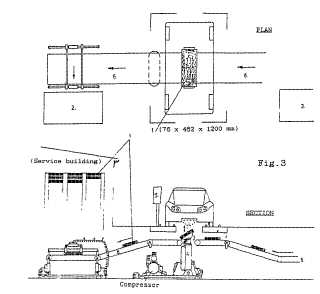|
BLUEPLANET
ECOSTAR
|
||||||||||||||||||||||||||||||||||||||||||||||||||||
|
HOME | INDEX | AUTOMOTIVE | CLIMATE | ELECTRIC CARS | ENERGY | FORMULA E | SOLAR CARS |
||||||||||||||||||||||||||||||||||||||||||||||||||||
|
Ask any motorist and they'll tell you that the only reason they don't trade in their petrol cars for pure clean EVs is the range limitation of currently available vehicles and the time it takes to recharge.
Hybrids are one possible answer to the transition problem, but these too are not equipped with the all essential cartridge system to be able to take the next step. We would like to see all motor manufacturers agree a universal format to prevent a format war in the future which will inevitably see consumers losing out at some stage, wasted investments and the creation of more carbon dioxide than is necessary in the development process.
ENSTO group EVC charging points Australia
The invitation has been on the table for many years to all manufacturers to design a prototype EV with a battery cartridge exchange system built in. It's not difficult, our design consultant produced two loading systems in his home garage by hand (see below). The technology exists but will need to be adapted and refined by each manufacturer's engineers for their own vehicles.
For that to happen open communication between companies is essential, or at least confidential communication when it comes to manufacturer's chassis refinements, but open communication when it comes to agreeing the basics, such as the capacity and shape of a Universal Cartridge.
Once there are a sufficient number of pre-production prototypes from different manufacturers, energy suppliers will want to build service stations to service those vehicles. We would suggest timing the construction of these service forecourts to coincide with the launch of EVs equipped with instant cartridge refueling. We hope that the present $10 billion fund for such innovation might tempt companies such as: Amoco, BP, Chevron, Mobil, Shell and Texaco to explore the opportunity that the Ecostar™ system presents.
There is a system for charging at service forecourts which calculates depreciation and energy costs called Pay As You Drive (PAYD). This system gives further protection and advantages to serious clean motorists. In tandem with the development of EV service stations, we would advocate roadside charging points for motorists, especially in cities and larger towns. These may provide top up charging for motorists that don't travel very far. Whereas, cartridge exchange provides unlimited range for business and tourism, etc. It's a logical and necessary development for mankind, if we are to continue to enjoy the present level of transportation when the oil runs out.
EV charging points in San Jose
If you are an energy company interested in supplying electricity for EVs equipped with the cartridge exchange instant refueling system, we would like to hear from you. We hope to generate interest from energy companies around the world, to be able to form a consortium, to share costs and take into account the requirements of your country when formulating a universal cartridge based service station.
Motor manufacturers who are interested in exploring the possibilities for this technology should contact us. We will be pleased to advise if a particular floorpan of any of your production vehicles may be adapted easily to use the Ecostar™ cartridge refueling system.
This is an example (from GB2253379) of how not to introduce cost effective forecourts. In this scenario the car does not contribute to the process so the forecourt needs more expensive underground or over-ground installation. There is though a means to enjoy the advantages of multiple systems via improvements.
This innovation is the logical next step in the evolution of electric vehicles. You wouldn't buy a petrol car without a starter motor, so why buy an electric car without a traction battery unloading/loading mechanism built in?
Service forecourts designed to deliver Ecostar™ or other universally compatible battery cartridges, only have to concern themselves with delivering a cartridge to the forecourt and collecting the spent/returned cartridge. Ecostar™ and/or other compatible forecourts are therefore simpler and cheaper to install and will operate on a cycle with fewer moving parts. It's like comparing a piston engine with a turbine. Better Place and NIO are the pistons engine versions of EV service stations. Tesla did not really enter the fray.
With Ecostar it will be possible to service an equivalent number of cars per day, as compared to a petrol service station. This means that a total transition from petrol cars to EVs is possible by 2030, provided that this technology is adopted by enough motor manufacturers to incentivise energy companies such as those below to want to join in the changeover process.
It's up to you. Why wait and watch the opposition take the lead. Wouldn't it be better to be proactive. You need only allocate a small portion of your R&D budget and a few engineers to convert one of your production cars to see for yourself.
ENERGY
GENERATING-DISTRIBUTION UTILITIES AFRICA AMERICAS AUSTRALIA CHINA NextEra
LLC
|
||||||||||||||||||||||||||||||||||||||||||||||||||||
|
This
website is copyright © 1991- 2013 Electrick Publications. All rights
reserved. The bird logo Max Energy Limited is an educational charity. |



